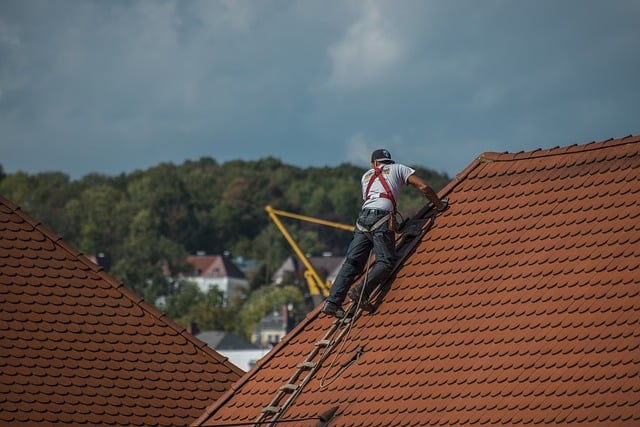As a facility manager, it is your duty to take care of different aspects of building maintenance. A building maintenance checklist is a must-have security tool for every facility manager. It will help you take care of preventative maintenance activities, checkups, and periodic planning.
An irregular maintenance schedule can lead to serious safety and security problems down the line. Because of this, 78% of manufacturing facilities have a preventative maintenance strategy in place. By adhering to a building maintenance checklist, you will prevent situations that can have serious consequences on your organization and everyone working for it.
Factors to Consider When Putting Together a Building Maintenance Checklist
Engineering: To find and fix critical wear, your checklist should include the right frequency of maintenance as well as the right tasks.
Economic: Will all the maintenance work actually pay off? Sometimes, when you factor in safety considerations, downtime and all costs that can come with equipment failure, replacing an asset will cost less than maintaining it.
Management: You should design your operations systems to deliver solid preventative maintenance outcomes. Your organization should embed preventative maintenance into its business operations and processes.
People: To make sure maintenance work will be carried out properly, maintenance employees should have proper-training before-hand.
Lighting
Schedule a regular lighting inspection. Be sure to include all the lights in your building on your checklist.
- Check all exterior, interior, and exit lights for proper installation and function.
- Inspect the power supply on a daily basis.
- Monitor the usage and consumption of electricity.
- Check the cables and the hardware of exterior lighting for damages.
- Dust and clean dirty lamps.
- Check luminaries that have control gear or lighting transformers.
- To maintain consistency, check the colour temperature when replacing light bulbs.
- Check whether the lighting is aimed as intended.
- If you encounter any nonfunctional light bulbs, be sure to replace them. Consider switching bulbs as a group when they begin to fail. For instance, you can estimate how much you use the lamps on a weekly or monthly basis and compare it to their expected service life. You can create a schedule for this according to your findings.
Safety
- Inspect and restock all first aid kits.
- Inspect all safety equipment (such as fall prevention harnesses).
- Test flashlights, carbon monoxide detectors, smoke detectors and the whole fire alarm system. Be sure to change the batteries regularly.
- Inspect and clean respirators.
- Make sure that all equipment labels and safety signs are clearly visible and in good condition.
- Inspect all eyewash stations and bottles.
- Check the air quality and water quality in the facility.
- Execute all fire protection and safety procedures.
- Inspect fire exits and escape routes on a daily basis.
HVAC and Pneumatics
- If you have air compressor pumps, check the oil levels. So that you will know when to replace the oil, be sure to take usage into account.
- Clean or replace air filters. You should do it at least quarterly. Depending on the usage, you may need to do it more frequently.
- Check the fittings, tubes, and pipes for leaks. Be sure to inspect compressed air lines regularly.
- Find screw issues.
- Maintain proper indoor temperature.
- Secure any loose access panels or guards.
- Lubricate pipes at least once a year.
- Inspect refrigerant piping and insulation.
- Check the discharge, air intake, and condenser coil.
- Check the condenser motor bearings.
- Test all safety controls.
- Check and clean all exhaust fans.
- Check energy efficiency settings.
- Check the economizer for debris and corrosion.
- Calibrate sensors on the economizer.
- Check and replace oils and refrigerants.
- Check the cooling towers, wiring and log observations, support structure and gearbox, fan blades, and fill valves.
Plumbing
- Look for leaks in public restrooms.
- Inspect sewage and sump pumps annually.
- Run system tests and check contacts for wear.
- Recharge U-bend or P-traps.
- Check couplings.
- Lubricate circulation pump systems.
- Hire a professional to check the boilers and chillers.
Roofing
- Inspect the roof bi-annually and after extreme weather.
- Clear debris from drains and gutters.
- Check roofing warranties, contracts, and files.
- Carry out a moisture survey to find leaks.
- Inspect the protection of the roof membrane. If there isn’t any, be sure to install it.
- If the roof is made out of bitumen, check splits in the stripping piles.
- If you have a metal roof, make sure to protect it from corrosion.
- The best way to check the metal and copings for damage is to inspect the perimeter.
Cleaning and Planting
- Ensure staff cooperation when it comes to cleaning.
- Maintain a regular cleaning schedule.
- Control the correct use of cleaning chemicals.
- Inspect glass cleaning, daily sweep out, and other refresh activities.
- Inspect sanitation equipment and maintain industrial hygiene.
- Control planting schedules and cleaning services.
- Check the trees (you want to avoid any sudden branch drops).
Overall Long-term Checkups
- Each 3 to 5 years, hire licensed professionals to carry out electrical system checkups. However, if your organization has its own data centre in the buildings, you will need to carry out data centre safety and security checkups and maintenance more often.
- Inspect and clean garage lots twice a year. As for other exterior surfaces, be sure to repair them every 10 to 20 years.
- Check windows and doors for weariness each year.
- Carry out seasonal building preparations (for instance, winterising the building).
- Maintain relationships with maintenance contractors.
- Manage maintenance expenditures.
Takeaway
You need to clearly define your building maintenance program. Each piece of equipment needs to have its own detailed maintenance activities list. You should review this document regularly, and adjust it if necessary.



